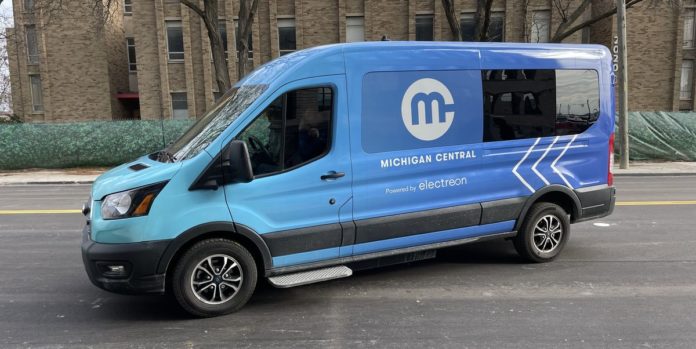- The first stretch of inductive-charging road in North America just debuted in Detroit.
- The new technology marks a clear push in the United States for new and varied forms of charging for electric vehicles.
- As things stand now, the wireless-charging section of the road spans a quarter-mile on 14th Street, near Michigan Central and the city’s mobility district.
At this point, most of us own at least one wireless charger for our smartphones. On top of that, most new cars that have come out in the last few years are equipped with a wireless charging pad to give us even more freedom of choice. Today, North America’s first stretch of inductive-charging road was unveiled in Detroit, Michigan.
America’s First Wire-Free Charging Road
The manufacturer of the emerging technology is an Israeli company called Electreon, which already has functioning EV-charging roads in Israel and a handful of European countries. According to the company’s vice president of business development, Stefan Tongur, the goal is to keep batteries in EVs smaller while still extending their range.
A quarter-mile stretch of road in Detroit’s Corktown neighborhood is now equipped with the ability to wirelessly charge compatible vehicles as they drive down the street. The technology utilizes a series of specialized coils laid beneath the asphalt, with each individual coil connecting back to a series of power-managing hubs along the side of the road. A corresponding receiver is also placed beneath the EV and absorbs power as it crosses over each coil. Of course, automakers will need to collaborate with Electreon to have receivers installed on vehicles in the future.
Electreon’s Plan
The main focus for the company right now is less on passenger vehicles and more on things like public buses or last-mile delivery vehicles. Rather than focusing on turning highways or other high-speed roadways into charging corridors, the company sees it as more practical and cost-efficient and looks to install the technology in places that can utilize more charging time
Tongur offered stoplights and bus stops as two examples of locations he thinks would be ripe for the technology. That’s because the tech requires each car to stay above the coils to actually charge. If Electreon can install chargers at intersections where vehicles will be stationary for longer periods of time, they can get more bang for their buck than if they install them along highways.
In a demonstration for local lawmakers and media, Electreon drove a Ford E-Transit equipped with the receiver along the new road. We saw the charging rate reach as high as 19 kilowatts during the presentation—though only for a brief moment.
Associate News Editor
Jack Fitzgerald’s love for cars stems from his as yet unshakable addiction to Formula 1.
After a brief stint as a detailer for a local dealership group in college, he knew he needed a more permanent way to drive all the new cars he couldn’t afford and decided to pursue a career in auto writing. By hounding his college professors at the University of Wisconsin-Milwaukee, he was able to travel Wisconsin seeking out stories in the auto world before landing his dream job at Car and Driver. His new goal is to delay the inevitable demise of his 2010 Volkswagen Golf.


